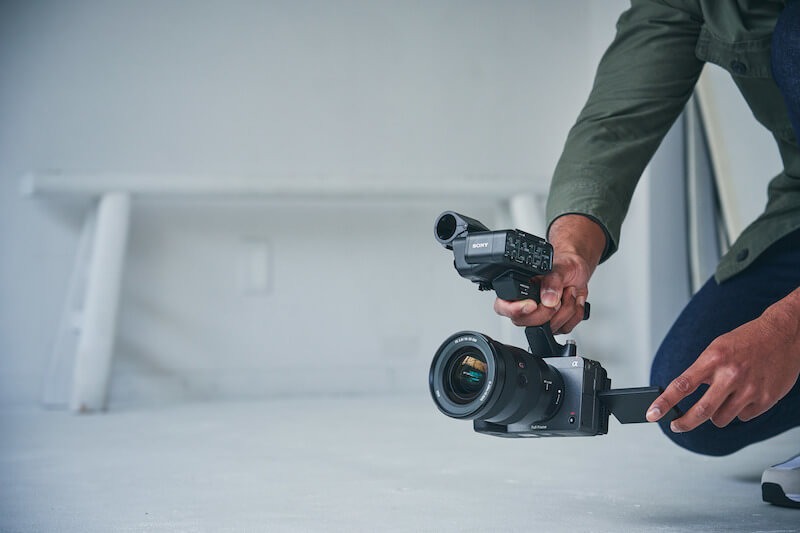Australia’s creative and cultural industries are not only vibrant but also powerhouses of employment and economic growth.
In 2016, the cultural and creative workforce—including roles such as film and media professionals—totaled 868,098 people, representing 8.1% of Australia’s entire workforce.
Within that, the arts and entertainment sector alone employed 193,600 individuals, reflecting its significant presence in the national economy.
This robust base underscores why investing in a videography course isn’t just about mastering camera skills—it’s about entering a growing and essential creative industry, with real career opportunities and cultural impact.
Why a Videography Course Is a Smart Move
- Enter an In-Demand Industry
With nearly 200,000 people working in arts and entertainment in Australia, trained videographers are vital across film, TV, online media, and digital content creation. - Learning the Full Spectrum
These courses go beyond camera operation—they cover storytelling, lighting, sound, editing, post-production, and project management. This equips you with comprehensive skills for today’s multimedia landscape. - Structured Path to Confidence
Formal instruction provides effective frameworks: from pre-production planning to on-set techniques to post-production finesse. Learning in stages helps you grow steadily and professionally. - Network and Industry Exposure
Many courses include guest lectures, industry partnerships, and real-world projects—great opportunities to build connections and launch your portfolio.
What You’ll Learn in a Professional Videography Course
A high-quality videography course equips you with a blend of technical expertise, creative skills, and professional know-how to thrive in the industry.
Here’s what you can expect to gain:
- Technical Foundations: Develop confidence with cameras by learning how to master framing, focus, exposure, lighting arrangements, and audio recording.
- Creative Storytelling: Explore the art of scriptwriting, scene design, pacing, and visual storytelling—skills that transform raw footage into compelling narratives.
- Practical Production Experience: Gain hands-on training through mock shoots, real client projects, and teamwork exercises that simulate industry conditions.
- Post-Production Mastery: Learn to edit with professional software such as Adobe Premiere Pro, Final Cut Pro, and DaVinci Resolve while enhancing your videos with color correction, sound design, and smooth exporting workflows.
- Professional Development: Understand the business side of videography, including building your brand, sharing content on platforms like YouTube and Vimeo, managing client relationships, and navigating freelancing opportunities.
Learn from a Pro: Watch This
Here’s a standout YouTube tutorial that illustrates real-world videography skills in action and serves as a great supplemental resource:
Videography for Beginners | Full Course, Start Here!
(This example video showcases essentials of composition, shot variety, and professional lighting—perfect to complement formal training.)
Choosing the Right Course: What to Look For
- Accreditation & Reputation
Opt for recognized providers—universities, TAFEs, or industry-oriented media schools with strong feedback and up-to-date syllabi. - Hands-On Learning
Courses with real-world projects, peer reviews, and portfolio development give you tangible, marketable outcomes. - Industry Exposure
Look for courses with internships, alumni networks, and faculty connected to production houses or media firms. - Resource Accessibility
Access to cameras, lighting kits, editing suites, and software ensures you practice with professional-grade tools.
What Comes Next: From Coursework to Career
- Build a Strong Showreel
Create a dynamic demo reel with diverse footage—short narratives, product videos, interviews, event coverage—to showcase your range. - Harness the Power of Social Media
Upload “Behind the Scenes” clips, timelapses, or quick cinematography tips to build your brand on Instagram, TikTok, or LinkedIn. - Start Freelancing or Interning
Offer services for small events, local businesses, or YouTubers. Every project, no matter how small, strengthens your portfolio and contacts. - Stay Sharp
The field evolves constantly. Keep learning new techniques, trends, and technologies—like drone videography, VR, live streaming, or AI-assisted editing. - Join Creative Communities
Attend media festivals, meet peers through online forums, and participate in local industry groups to grow your professional network.
By investing in a high-quality videography course, you’re gaining more than tech skills—you’re entering one of Australia’s most dynamic creative sectors.
With nearly 200,000 professionals in the arts and entertainment workforce, and demand for digital storytelling only increasing, the time is ripe to refine your vision and craft.
Let me know if you’d like help finding top-rated videography courses in Australia, refining your portfolio, or boosting your social media presence to launch your videography career.
